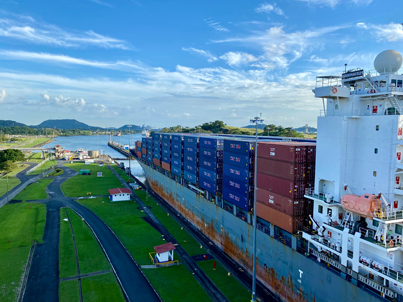Intermodal transport is characterized by moving both goods and materials by combining different modes of transport. The advantages of intermodal transport are many, and its aim is to achieve optimal and efficient management of transport operations. In this article, we will delve into the concept and tell you about the many advantages of intermodality.
Intermodal transport uses at least two different modes of transport to move freight units. Its main characteristic is that the transfer between one type of transport and the next occurs without the need to open the load, thus minimizing its handling and avoiding its breakage. This method of transport also provides a cost-effective option in relation to fuel and seeks to preserve the environment. Because of its competitive advantages, intermodal transport is an ideal alternative for international trade.
Intermodal transport: its history
The term intermodal transport was created during the 1980 UNCTAD Convention and is today one of the most widely used methods of moving goods in international trade.
While road transport (RTO) has always been a safe and transparent way of moving goods, the technologies that have emerged with the advent of intermodal transport have made it an even more efficient service. By implementing intermodal transport, it is possible to use standardized freight containers that optimize transport from one place to another, control costs and eliminate the risks that come from direct handling of shipments. In this way, it greatly reduces the resources used to manage products and goods, reduces the costs of logistics operations, increases the speed of loading or unloading goods and preserves the environment.
What are the advantages of the intermodal system?
As we have said, this method of transport has changed the paradigm of moving products and goods due to its multiple benefits. The most noteworthy are:
Greater agility
Intermodal transport is an extremely agile system. By saving time in transshipment, idle times are reduced. In addition, containers in intermodal transport are sealed, which means that controls and inspections are less common and goods or products are delivered more quickly, compared to other transport systems.
Lower prices
Intermodal transport has lower prices, as the costs of logistics operations can be reduced by choosing the most economical option based on the needs of each client. Prices are usually agreed in advance, depending on the characteristics of each operation.
Increased security
One of the key benefits of this transport system is its safety. Intermodal transport generally has fewer transshipment incidents than other systems, as it uses the same transport unit. In addition, since the load is locked from start to finish, all risks of loss or theft at intermediate points are reduced.
Environmentally friendly
Intermodal transport goes hand in hand with sustainability, as it seeks to preserve the environment and reduce pollution as much as possible, thanks to the resources used in its transport operations.
Simple management
If you are looking for a transport system that is easy to manage, intermodal is a great option. Although different modes of transport are used, the documentation is unified for all of them. For that reason, you can have a single document to simplify paperwork and facilitate the management tasks of your business.
Greater convenience for the user
The intermodal transport operator is the one who manages all the logistics in the various modes of transport, thus reducing bureaucracy and providing greater convenience for the customer.
Time reduction
Increasingly, time is a key factor in all logistics processes. If you are looking to reduce time in your business operations, intermodal transport is what you need. This is because it uses the combination of transports that is fastest in each operation, to move the product or merchandise to its destination.
Possibility of grouping loads
Intermodal transport makes it possible to group loads in transfer units, which favors a 70% reduction in the time spent on loading and unloading tasks.
Enables new business opportunities
By improving transport services and the possibility of grouping loads, exporters can position their products at competitive prices in markets that are difficult to access.
Easier tracking of goods
In the intermodal transport system, the control of the goods is improved at all times thanks to computerized control, such as electronic data interchange.
Because of all the competitive advantages mentioned above, intermodal transport is an ideal alternative for international exchanges. However, it should be borne in mind that it does not make sense to use it for distances of less than 700 miles and that the quality of the service depends on the level of the rail infrastructure in the country in question.
If you would like to know more about how we manage intermodal transport, do not hesitate to contact us.
Tradisa is an integrated logistics operator in Europe for the automotive and petroleum products sectors and for other synergistic sectors such as consumer electronics.


